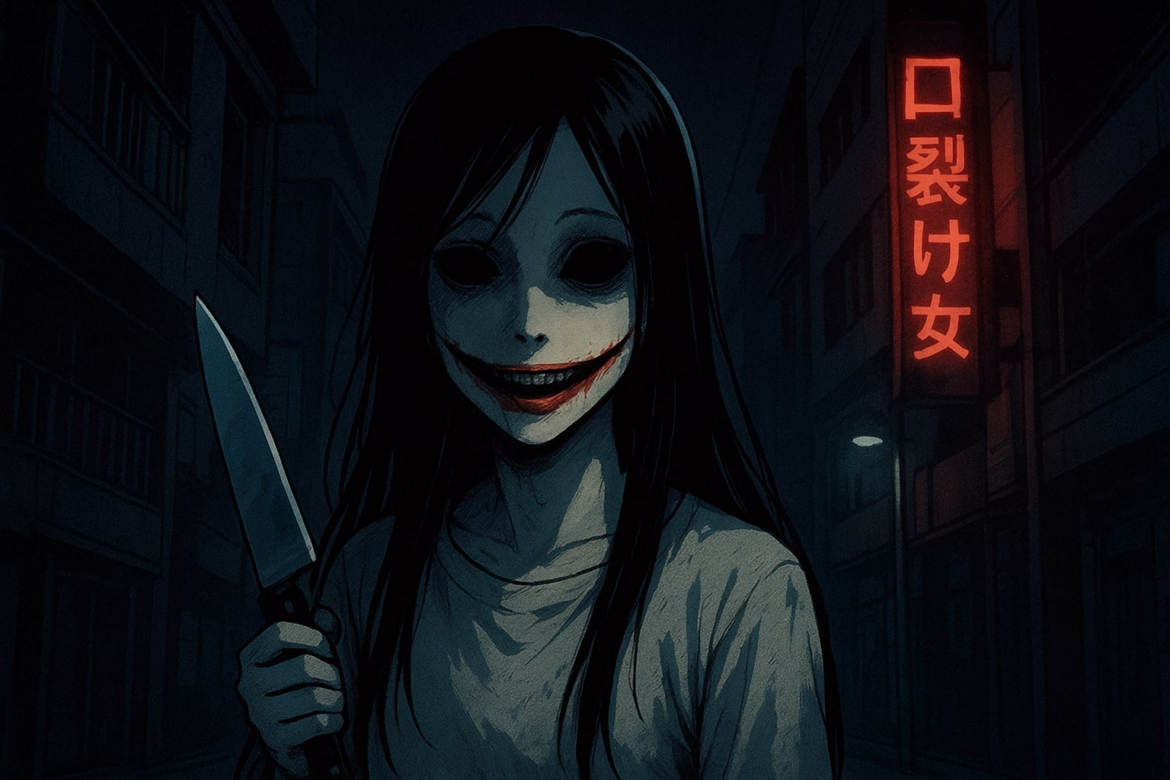1. The Red Room Curse (赤い部屋の呪い)
— The Internet’s Dark Reflection
In Japan’s late-1990s internet culture, one eerie pop-up began circulating among curious net users: a crimson window appearing on the screen, asking in blood-like letters —
“Do you like the Red Room?”
Those who closed it supposedly vanished soon after, found dead in their homes with their walls painted red — not with paint, but blood.
The “Red Room Curse” became one of Japan’s earliest digital urban legends, blending fear of technology with supernatural consequence.
It mirrors Japan’s anxiety during the dawn of the digital age — when technology promised connection, but also carried the unknown.
Psychologists often interpret this legend as a fear of isolation hidden behind virtual life.
In a society where harmony and connection are prized, the idea of being consumed by one’s private “red room” — a symbol of loneliness and guilt — resonated deeply.
Interestingly, this story inspired early internet horror such as The Ring (Ringu, 1998) and Ju-on (The Grudge), where technology acts as a bridge between human guilt and vengeful spirits.
Today, “Red Room” videos still appear on YouTube, echoing that same question — and even though we know it’s fake, part of us hesitates before answering.
⸻
2. Kuchisake-onna (口裂け女)
— The Woman with the Slit Mouth
No discussion of Japanese urban legends is complete without her.
The story first spread in the late 1970s, terrifying children across the nation.
A beautiful woman wearing a mask approaches you on a dark street and asks softly:
“Am I beautiful?”
If you say yes, she removes her mask — revealing a mouth slit ear to ear.
Then she asks again:
“Even now?”
If you say no, she kills you. If you say yes, she slashes your mouth to resemble hers.
The legend of Kuchisake-onna reflects Japan’s social obsession with appearances and conformity.
Behind her monstrous smile hides the fear of judgment — the anxiety of never being “beautiful enough” or “perfect enough” in the eyes of society.
Historically, scholars link her origin to Edo-period tales of jealous wives and vengeful spirits. But her revival in the 1970s also aligned with Japan’s economic boom — a time of growing urban alienation, especially among youth.
Children walked to school in groups out of fear. Police patrols increased. The panic was real enough that it made national headlines.
Even now, in an age of masks and social media filters, Kuchisake-onna feels strangely relevant — a ghost born from our collective insecurity about image and identity.
⸻
3. Teke-Teke (テケテケ)
— The Spirit That Crawls at Night
Late at night, on quiet train platforms, some say you can hear a faint scraping sound:
teke-teke… teke-teke…
That’s the sound of her hands dragging across the ground.
Teke-Teke is said to be the ghost of a young woman who fell onto train tracks and was cut in half by a train.
Now, she roams the night, moving on her elbows, chasing anyone who sees her — and if she catches you, she’ll slice you in half too.
The name comes from the chilling rhythm of her movement.
But beneath the gore, the legend carries deeper meaning.
It reflects Japan’s struggle with urban trauma — the guilt and sadness tied to suicide, accidents, and public tragedies that are often left unspoken.
Train stations, in particular, are both symbols of connection and isolation — places where countless people cross paths, yet remain strangers.
Teke-Teke is the embodiment of unresolved suffering, a reminder of those who fell through the cracks of an overworked, fast-paced society.
Her story continues to evolve online, with new versions adding details like viral curses or haunting videos — proof that urban fear never dies, it just updates.
⸻
4. The Psychology Behind Japan’s Urban Legends
Japanese urban legends differ from their Western counterparts in one key way: they rarely end with victory.
There’s no hero defeating the monster, no closure — only an echo, a cycle, a haunting continuation.
This reflects a deep-rooted cultural acceptance of ambiguity and impermanence (無常, mujō).
Fear in Japan isn’t about defeating evil, but understanding it — recognizing that darkness is part of the human condition.
Each story mirrors a collective anxiety:
• Red Room: isolation and guilt in the digital age.
• Kuchisake-onna: fear of appearance and social judgment.
• Teke-Teke: trauma and urban alienation.
In this way, Japan’s urban legends function like psychological mirrors — reflecting society’s hidden fears more than supernatural threats.
They evolve with technology, adapting from ghostly corridors to online chatrooms, TikTok, and VR horror games.
⸻
5. Why These Stories Endure
Japan’s storytelling tradition has always embraced the boundary between the seen and unseen — from ancient yōkai (spirits) to modern creepypasta.
The line between myth and modernity remains thin.
Urban legends endure not because we believe them, but because we feel them.
They connect us through shared emotion — fear, curiosity, empathy.
Even AI, when analyzing these stories, notes that their strength lies not in logic but in human vulnerability.
And perhaps that’s why they survive in the internet age.
Because deep down, we still long to be scared — not by monsters, but by the parts of ourselves we try to hide.
⸻
6. Author’s Reflection
Writing about these legends reminded me of something uniquely Japanese — the beauty of fear.
In Japan, horror isn’t just meant to terrify; it’s meant to reveal.
It shows us that emotions like loneliness, shame, or regret can take on a life of their own — whispering through empty streets, or glowing faintly from a computer screen.
As long as we have cities, technology, and hearts that ache, the stories of Kuchisake-onna, Teke-Teke, and the Red Room will keep evolving — not as myths, but as mirrors.
And maybe, just maybe, that’s what makes Japanese horror so timeless.


AloJapan.com